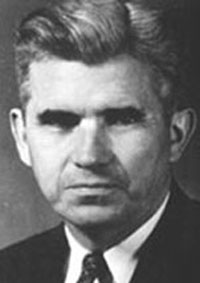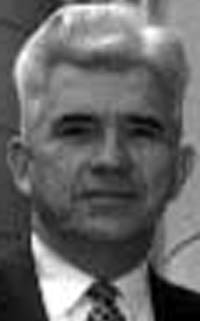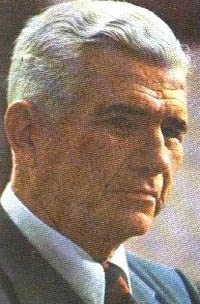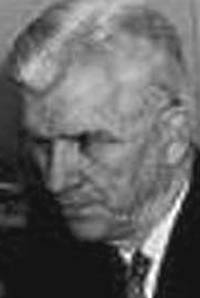Copyright Michael D. Robbins 2005
Astro-Rayological
Interpretation & Charts
Quotes
Biography
Images and Physiognomic Interpretation
chart needs rectified to location;
sunrise solar chart
AT THIS stage of the story nobody should take the existence of extra-sensory perception on faith. What the two preceding chapters have done is to describe certain experiments with cards, tell about the scores which some subjects were able to make with them, and quote the odds against guesswork or chance as the explanation. The tests as a whole, or in their natural subdivisions, gave results that are clearly beyond the best that could be expected from the so-called laws of luck. A figure of over a thousand digits would be required to express the unlikelihood of that solution. Some other factor was causing our results, and so far it has been called "extra-sensory perception" in a noncommittal way.
Rhine describes his early work with one of his more successful subjects, Hubert E. Pearce, a graduate divinity student:
The working conditions were these: observer and subject sat opposite each other at a table, on which lay about a dozen packs of the Zener cards and a record book. One of the packs would be handed to Pearce and he allowed to shuffle it. (He felt it gave more real "contact.") Then it was laid down and it was cut by the observer. Following this Pearce would, as a rule, pick up the pack, lift off the top card, keeping both the pack and the removed card face down, and after calling it, he would lay the card on the table, still face down. The observer would record the call. Either after five calls or after twenty-five calls -- and we used both conditions generally about equally -- the called cards would be turned over and checked off against the calls recorded in the book. The observer saw each card and checked each one personally, though the subject was asked to help in checking by laying off the cards as checked. There is no legerdemain by which an alert observer can be repeatedly deceived at this simple task in his own laboratory. (And, of course, we are not even dealing with amateur magicians.) For the next run another pack of cards would be taken up.
(September 29, 1895 – February 20, 1980)
(usually known as J. B. Rhine) was a pioneer of parapsychology. Rhine founded the parapsychology lab at Duke University, the Journal of Parapsychology, and the Foundation for Research on the Nature of Man.
Biography
Joseph (J.B.) Rhine was the second of four children born to Samuel Ellis Rhine and Elizabeth Vaughan Rhine in Waterloo, Pennsylvania. Samuel Rhine had been educated in a Harrisburg business college, had taught shool and later been a farmer and merchant. The family moved to Marshallville, Ohio when Joseph was in his early teens. A bright and strong-willed boy, Rhine grew up with a love of the outdoors.He was educated at Ohio Northern University and the College of Wooster, after which he enlisted in the Marine Corps, being stationed in Santiago where he became a sharpshooting champion. Afterwards, he enrolled at the University of Chicago, where he received his master's degree in botany 1923 and Ph.D. in botany in 1925. He taught for a year at Boyce Thompson Institute for Plant Research, in Yonkers, N.Y. Afterwards, he enrolled in the psychology department at Harvard University, to study for a year with Professor William McDougall. In 1927 he moved to Duke University to work under Professor McDougall. There, after he and his wife were impressed by a lecture given by Arthur Conan Doyle exulting the scientific proof of communication with the dead. Rhine later wrote, "This mere possibility was the most exhilarating thought I had had in years." [1] [2] Rhine began the studies that helped develop parapsychology into a branch of science, looking upon it primarily as a branch of "abnormal psychology".
Based in Durham, Rhine's next work had two aspects: one was lab experiments designed to probe the actuality or lack thereof of the Lamarckian theory of inherited characteristics in animals; the other was fieldwork that brought scrutiny, healthy skepticism, and rigor of data analysis to investigations of psychic mediums.
Rhine tested many students as volunteer subjects in his research project. His first exceptional subject in this ESP research was Adam Linzmayer, an economics undergraduate at Duke. In the spring of 1931, Linzmayer scored incredibly high in preliminary Zener-card tests that Rhine ran him through; initially, he scored 100% correct on two short (nine-card series) tests that Rhine gave him. Even in his first long test (a 300-card series), Linzmayer scored 39.6% correct scores, when chance would have been only 20%. He consecutively scored 36% each time on three 25-card series (chance being 20%). However, over time, Linzmayer's scores began to drop down much closer to (but still above) chance averages. Boredom, distraction, and competing obligations, on Linzmayer’s part, were conjectured as possible factors bearing on the declining test results. Linzmayer's epic run of naming 21 out of 25 took place in Rhine's car. [3]
The following year, among the new subjects Rhine tested another promising individual, Hubert Pearce, who managed to surpass Linzmayer’s overall 1931 performance in (Pearce’s average during the period he was tested in 1932 was 40%, whereas chance would have been 20%). Pearce was actually allowed to handle the cards most of the time. He shuffled and cut them. [4]
The most famous series of experiments from Rhine's laboratory is arguably the ESP tests involving Hubert Pearce and J. G. Pratt, a research assistant. Pearce was tested (using Zener cards) by Pratt, who shuffled and recorded the order of the cards in the parapsychology lab 100 yards from where Pearce was sitting in a campus library cubicle. Pearce's overall score in guessing the order of the unseen cards was twice as good as chance. Repeating the experiment some days later, with 250 yards distance between them, the score was again well above chance.
In 1934, drawing upon several years of cautious and rigorous lab research and statistical analysis, Rhine published the first edition of a book titled Extra Sensory Perception, which in various editions was widely read over the next decades.
In the later 1930s, Rhine investigated “psychokinesis” – again reducing the subject to simple terms so that it could be tested, with controls, in a laboratory setting. Rhine relied on testing whether a subject could influence the outcome of tossed dice – initially with hand-thrown dice, later with dice thrown from a cup, and finally with machine-thrown dice.
In 1940 Rhine published a book, Extra-Sensory Perception After Sixty Years, that summarized his own work and the work of earlier “psychic researchers” who had attempted to be methodical, painstaking, and scientific in their (very different from Rhine’s) approach, one emphasizing field work. Rhine invited his critics – scientists and academics who had debated or criticized his work, or even criticized Rhine himself – to contribute chapters to the book; only three did, and only one maintained an adamant criticism. During the War years, Rhine lost most of his male staff members to war work or the military. He carried on, though, and after the War he had occasion to study some dramatic cases outside the lab.
Rhine’s wife, Dr. Louisa Rhine, pursued work that complemented her husband’s in the later 1940s, gathering information on spontaneous ESP reports (experiences people had, outside of a laboratory setting).
Over the years, Rhine looked closely at reports of spontaneous, sometimes sensational or bizarre paranormal cases. With these, he sometimes, but not always — as in the case of Mina Crandon and Lady the "talking" horse, which Rhine believed was psychic and the "greatest thing since radio" [5] [6] — refused to pass judgment on their authenticity or just what principles were operating in them. He felt a good groundwork should be laid in the lab, so that the scientific community might, in the future, take parapsychology seriously.
In the early 1960s, Rhine founded the Foundation for Research on the Nature of Man, at Duke. In the 1970s, several high-scoring subjects – Sean Harribance, M.B. Dykshoorn, and Bill Delmore – were tested in the lab, shortly before Rhine’s retirement.
Legacy
Rhine, along with William McDougall, coined the term "parapsychology" (translating a German term). It is sometimes said that Rhine almost single-handedly developed a methodology and concepts for parapsychology as a form of experimental psychology; however great his contributions, some earlier work along similar — analytical and statistical — lines had been undertaken sporadically in Europe, notably the experimental work of Sir Oliver Lodge, of England.Rhine founded the institutions necessary for parapsychology's continuing professionalization in the U.S. — including the establishment of the Journal of Parapsychology and the formation of the Parapsychological Association, and also the Foundation for Research on the Nature of Man (FRNM), a precursor to what is today known as the Rhine Research Center. His parapsychology research organization was originally affiliated with Duke University, but is now separate.
Criticism
Rhine's impressive pioneering results, sometimes regarded by parapsychologists as the foundation of parapsychology, have never been duplicated, nor has anyone produced reliable evidence that a psychic can rotate a delicately balanced pin under a bell jar. Rhine repeatedly tried, but with failures he never reported. [7]Rhine has been criticized for not disclosing the names of assistants he caught cheating. Skeptic Martin Gardner wrote:
His paper "Security Versus Deception in Parapsychology" published in his journal (vol. 38, 1974), runs to 23 pages. [..] Rhine selects twelve sample cases of dishonest experimenters that came to his attention from 1940 to 1950, four of whom were caught "red-handed". Not a single name is mentioned. What papers did they publish, one wonders.
Assistants whose cheating has been made public in spite of Rhine's secrecy policy are James D. MacFarland and Walter Levy. Gardner claims to have inside information that Rhine's files contain "material suggesting fraud on the part of Hubert Pearce".
In 1983 his wife Louisa Rhine (whom he had married during their university years) wrote a book Something Hidden. She wrote (Gardner 1988:240-43)
Jim [James D. MacFarland] had actually consistently falsified his records. ... To produce extra hits Jim had to resort to erasures and transpositions in his records of his call series.
Joseph Banks Rhine
1895-1980--------------------------------------------------------------------------------
J. B. RHINE (Joseph Banks Rhine) is widely considered to be the "Father of Modern Parapsychology." Along with his wife Dr Louisa E. Rhine, Dr J. B. Rhine studied the phenomena now known as parapsychology at Duke University in Durham, North Carolina. J. B. Rhine collaborated with Professor William McDougall who served as the Chairman of the Department of Psychology. Dr. J. B. Rhine coined the term "extrasensory perception" (ESP) to describe the apparent ability of some people to acquire information without the use of the known (five) senses. He also adopted the term "parapsychology" to distinguish his interests from mainstream psychology.
The Duke experiments on telepathy, clairvoyance and precognition used specially designed cards called Zener cards. About the size of regular playing cards, these cards were composed of decks of 25 cards, with each card having one of five symbols on one size: a cross, star, wavy lines, circle and square. Under various experimental conditions, subjects would attempt to guess these cards. Out of each deck of 25 cards, 5 correct guesses were expected by chance. Using exact binomial probability calculations, it is possible to determine how "improbable" it would be to guess an excess number of cards correctly. In one set of experiments, 2400 total guesses were made and an excess of 489 hits (correct guesses) were noted. The statistical probability of this outcome is equivalent to odds of 1,000,000 to 1 (against chance) and thus show significant evidence that "something occurred." Sceptics will argue that factors other than ESP account for the deviations (some claim cheating by the subjects, sloppiness by the experimenters, etc.)
J. B. Rhine's work was summarised in a now-famous book Extra-Sensory Perception After Sixty Years (Rhine, J. B., Pratt, J. G.; Smith, Burke M; Stuart, Charles E; and Greenwood, Joseph A. Extra-Sensory Perception After Sixty Years, Holt: New York, 1940; Humphries: Boston, 1966)
What conclusions can we draw about Rhine's overall research program? By 1940, 33 experiments had accumulated, involving almost a million trials, with protocols which rigorously excluded possible sensory clues (e.g., by introducing distance and/or barriers between sender and receiver, or by employing precognition protocols (i.e., where the target has not yet been selected at the time subjects make their responses).
Twenty seven (27) of the 33 studies produced statistically significant results - an exceptional record, even today. Furthermore, positive results were not restricted to Rhine's lab. In the five years following Rhine's first publication of his results, 33 independent replication experiments were conducted at different laboratories. Twenty (20) of these (or 61%) were statistically significant (where 5% would be expected by chance alone).
A meta-analysis was done specifically for precognition experiments conducted between the years 1935 - 1987. (Honorton, C., & Ferrari, D. [1989]. 'Meta-analysis of forced-choice precognition experiments' 1935 - 1987. Journal of Parapsychology, vol 53, 281 - 308). This included 309 studies, conducted by 62 experimenters. The cumulative probability associated with the overall results was p = 10-24 (that is equivalent to .000000000000000000000001 where .05 is considered statistically significant). The scientific evidence for precognition, the most provocative of all parapsychological phenomena, stands of firm statistical grounds.
The Rhine Research Center in Durham still continues to be a thriving center for parapsychological research.




